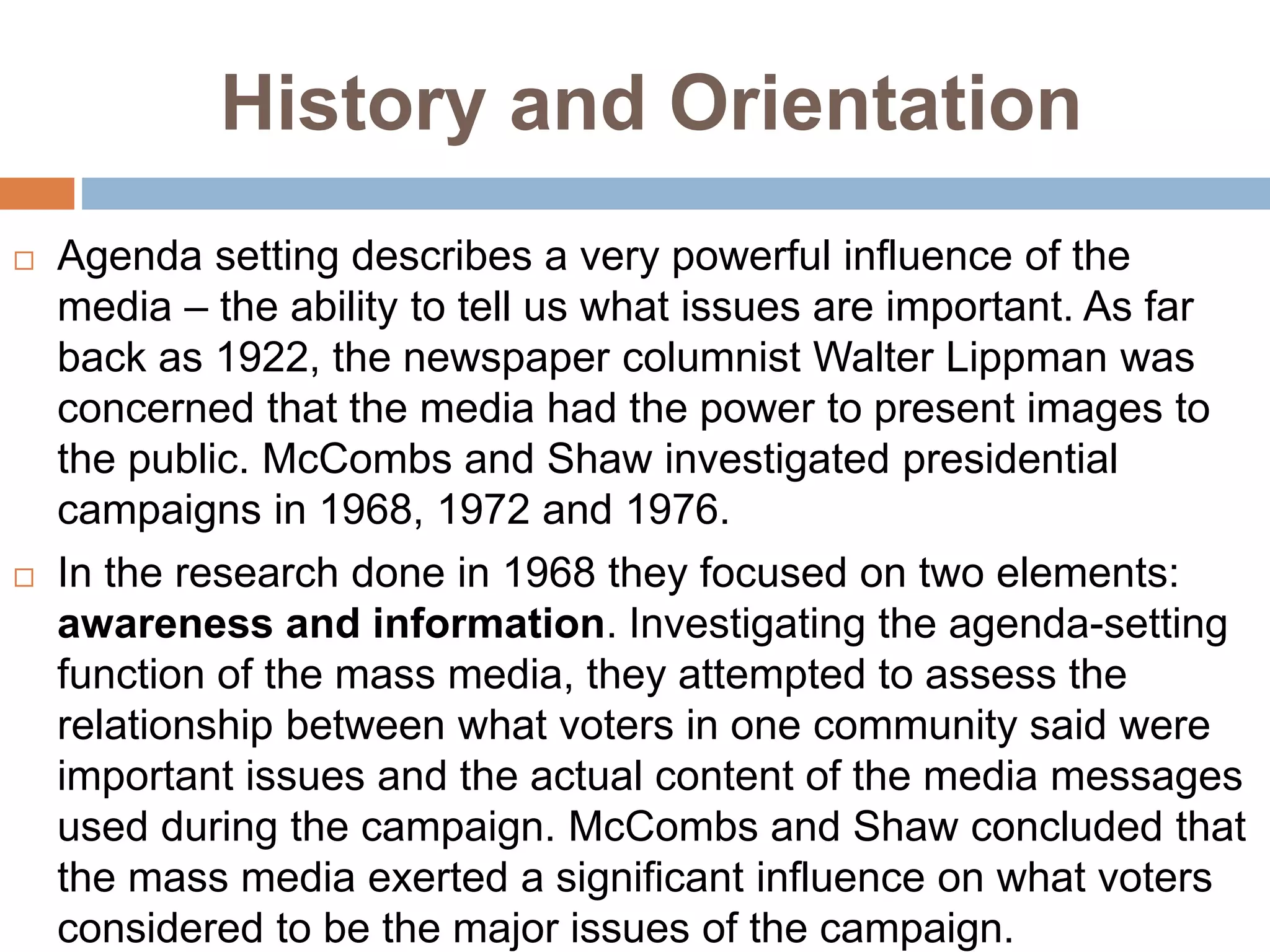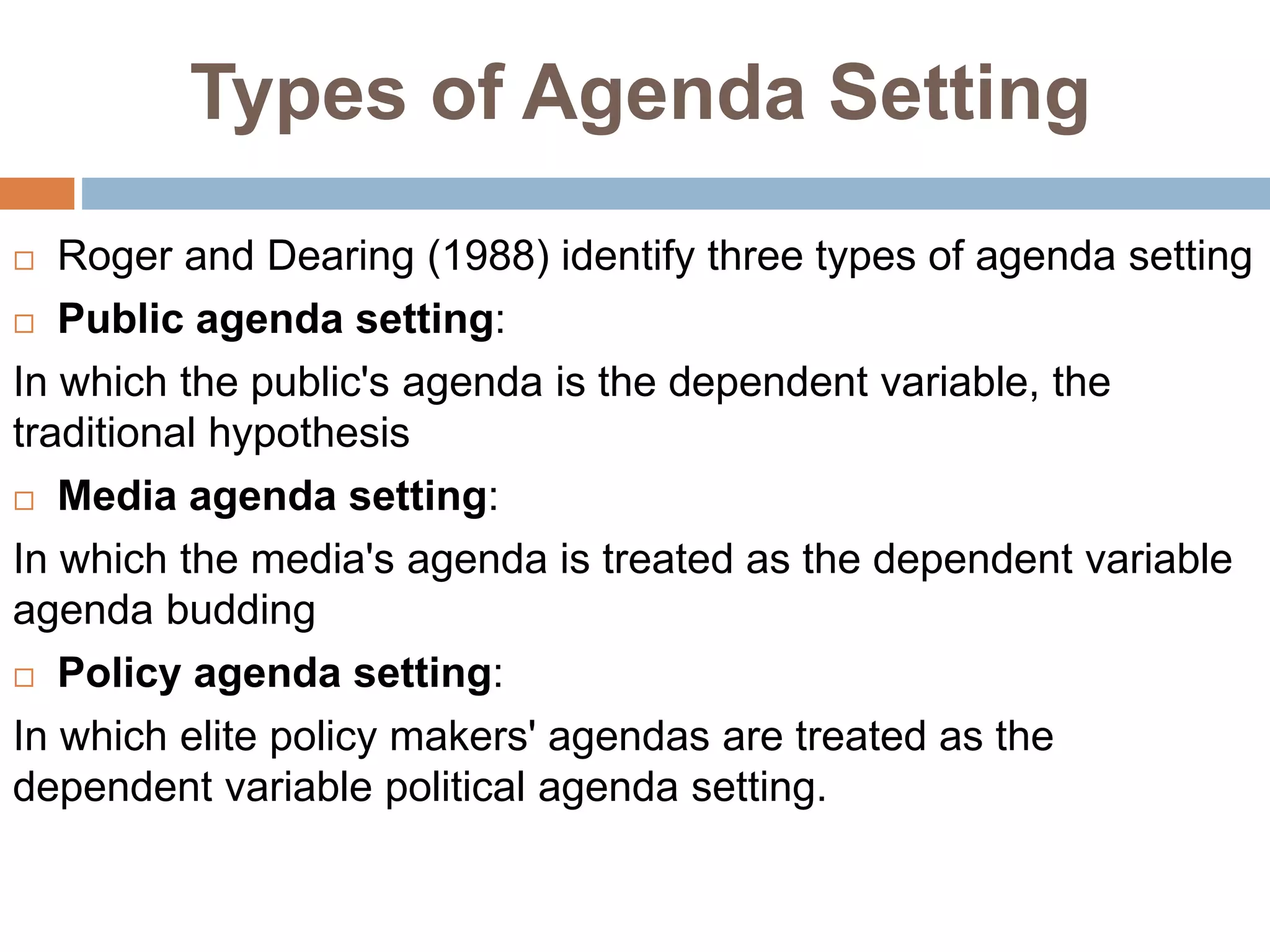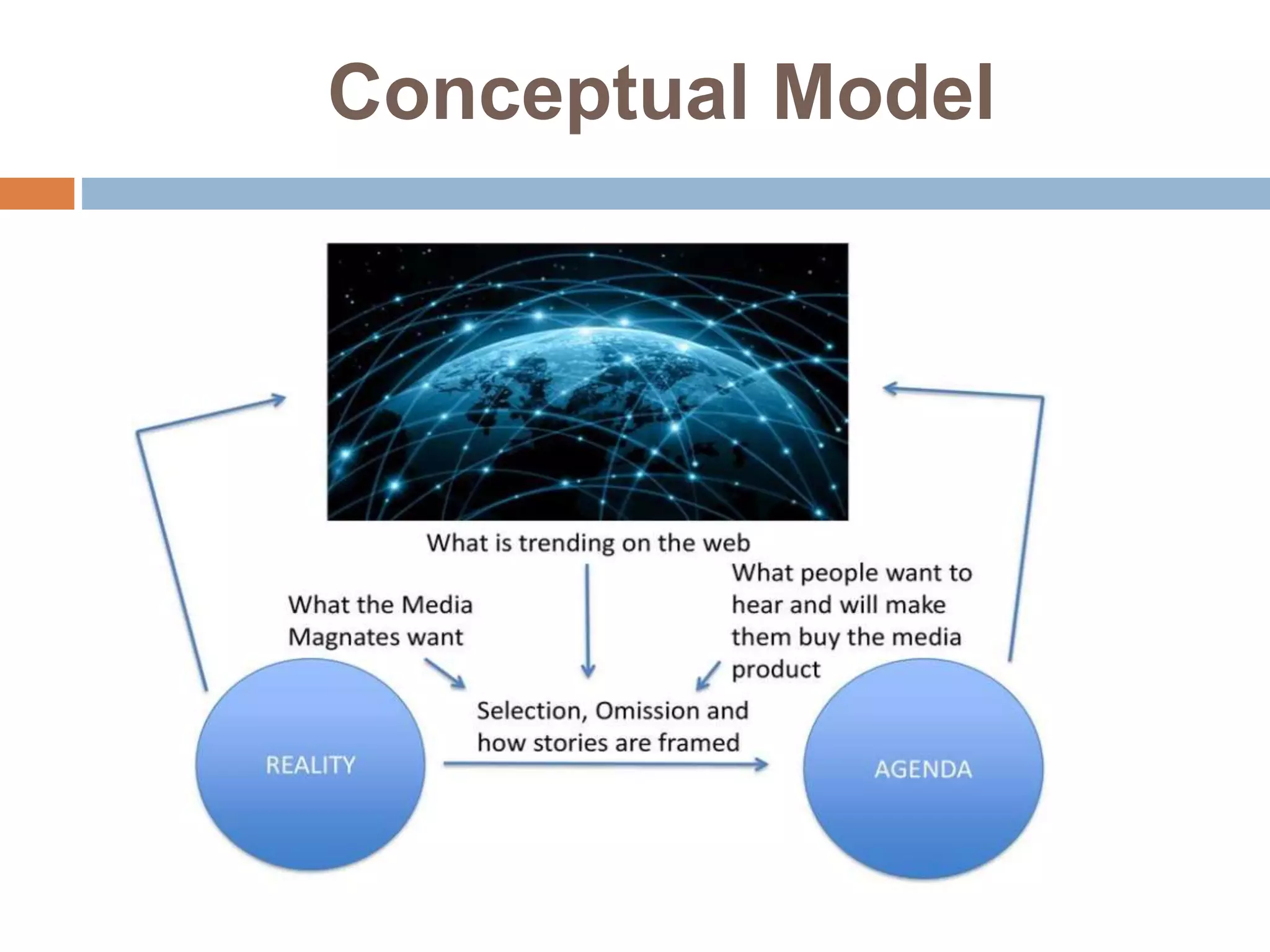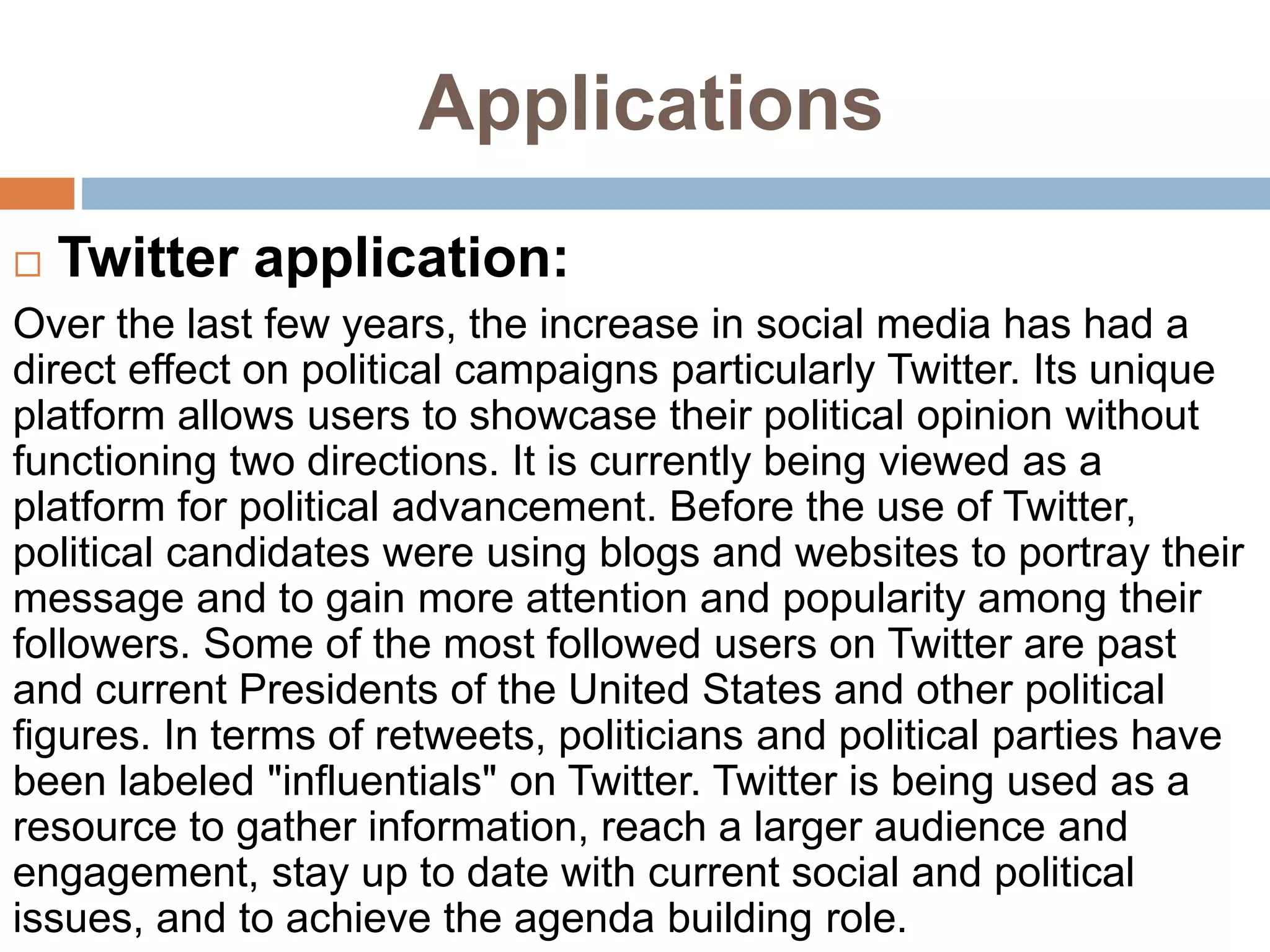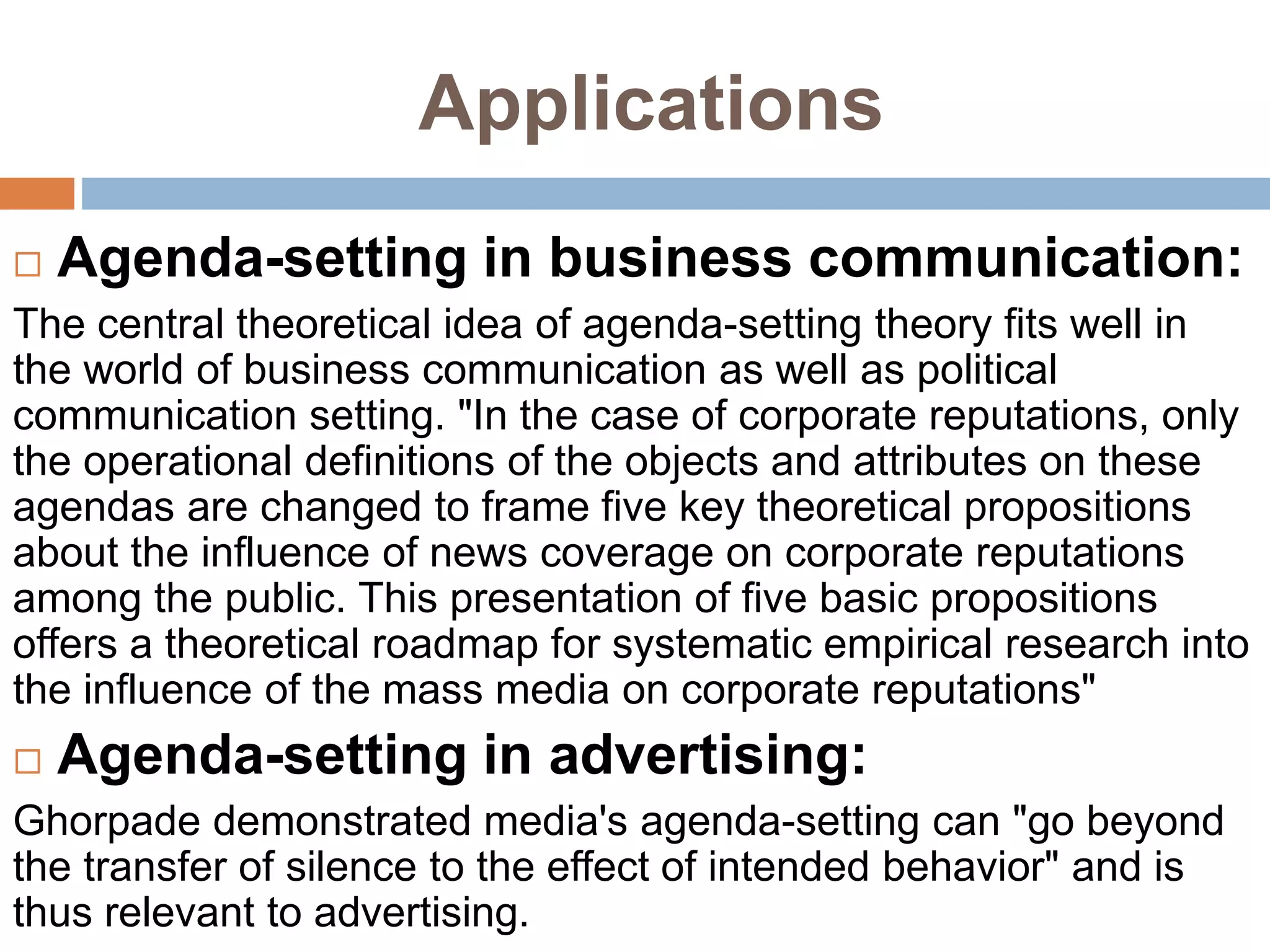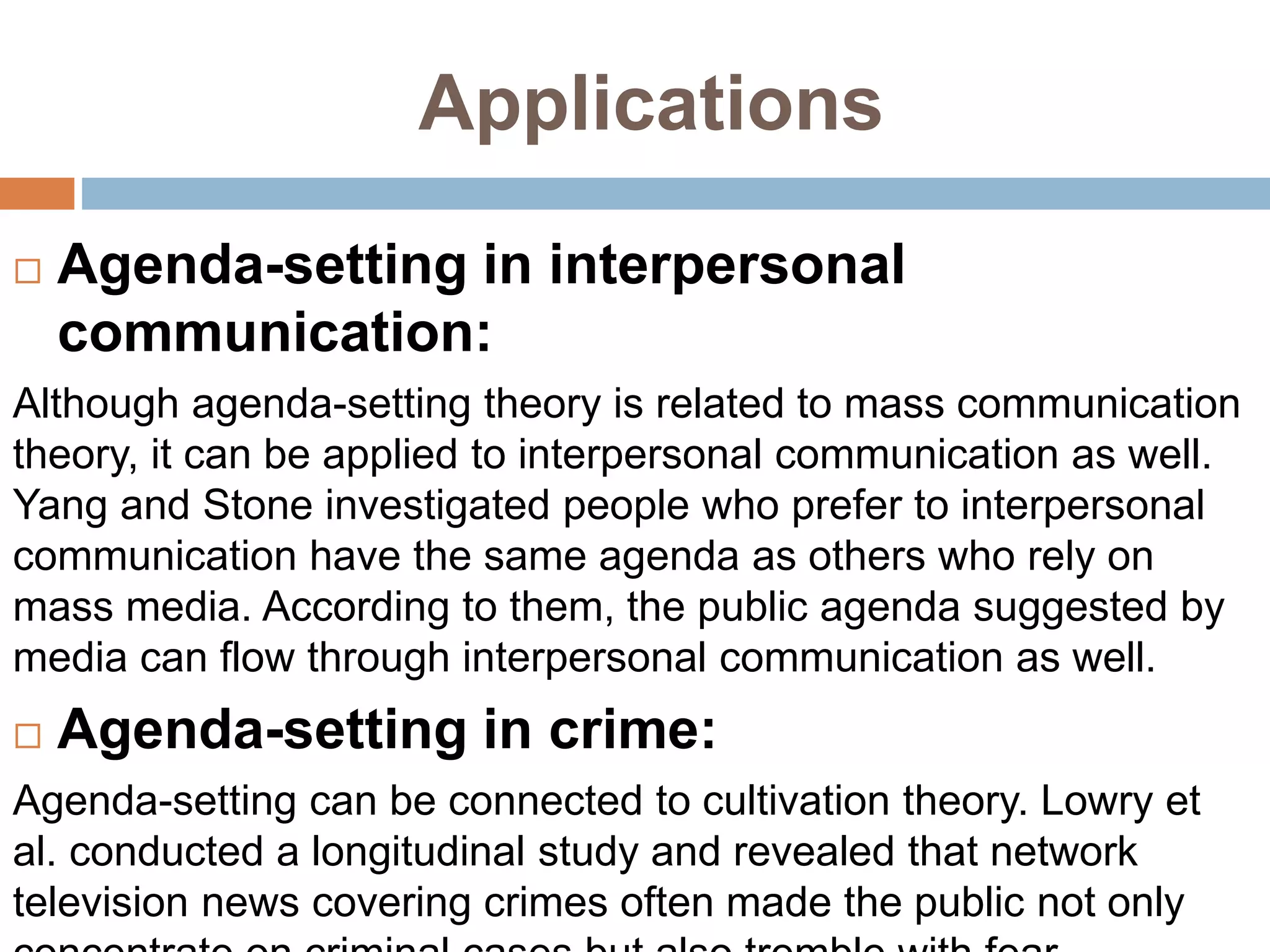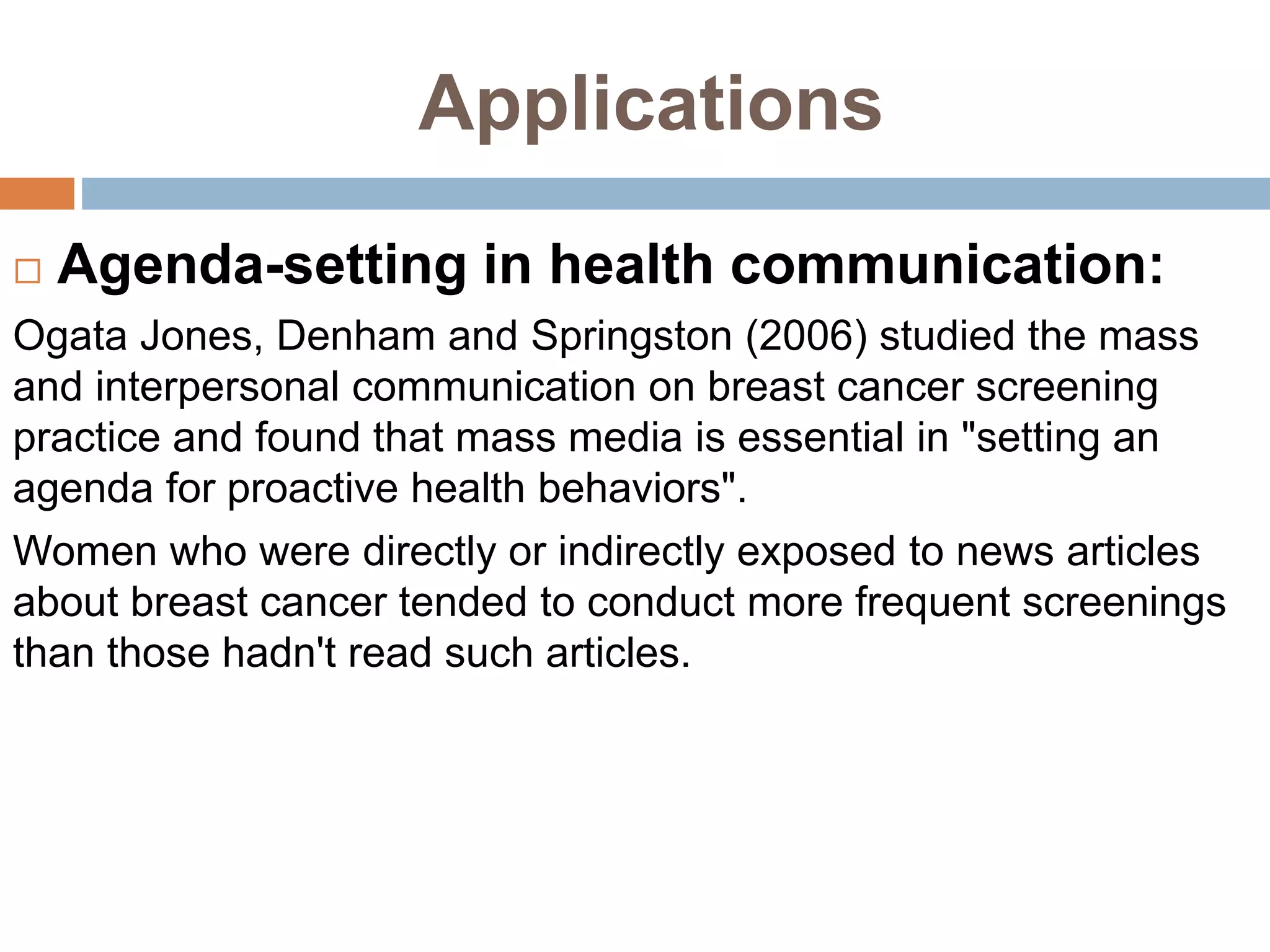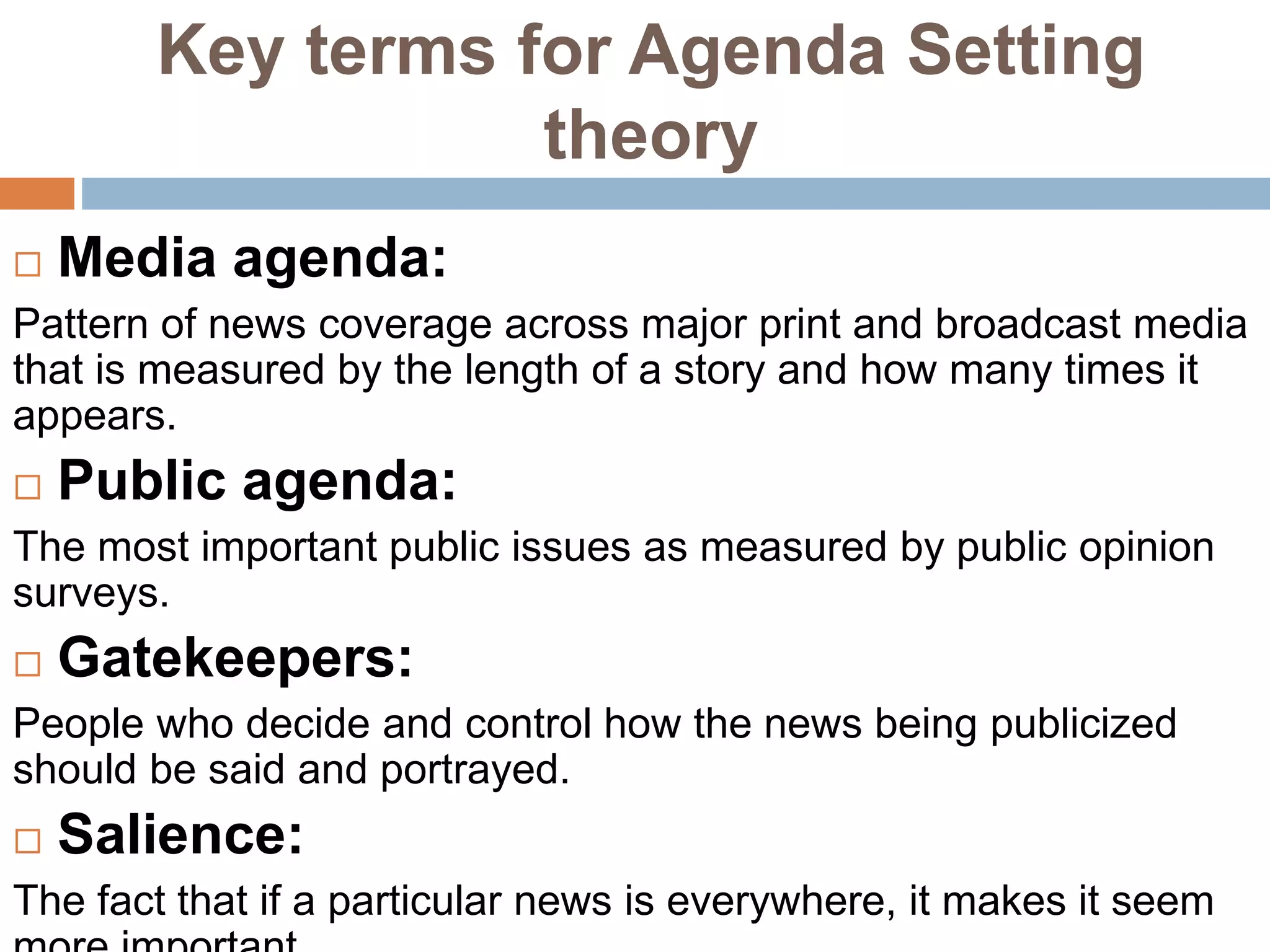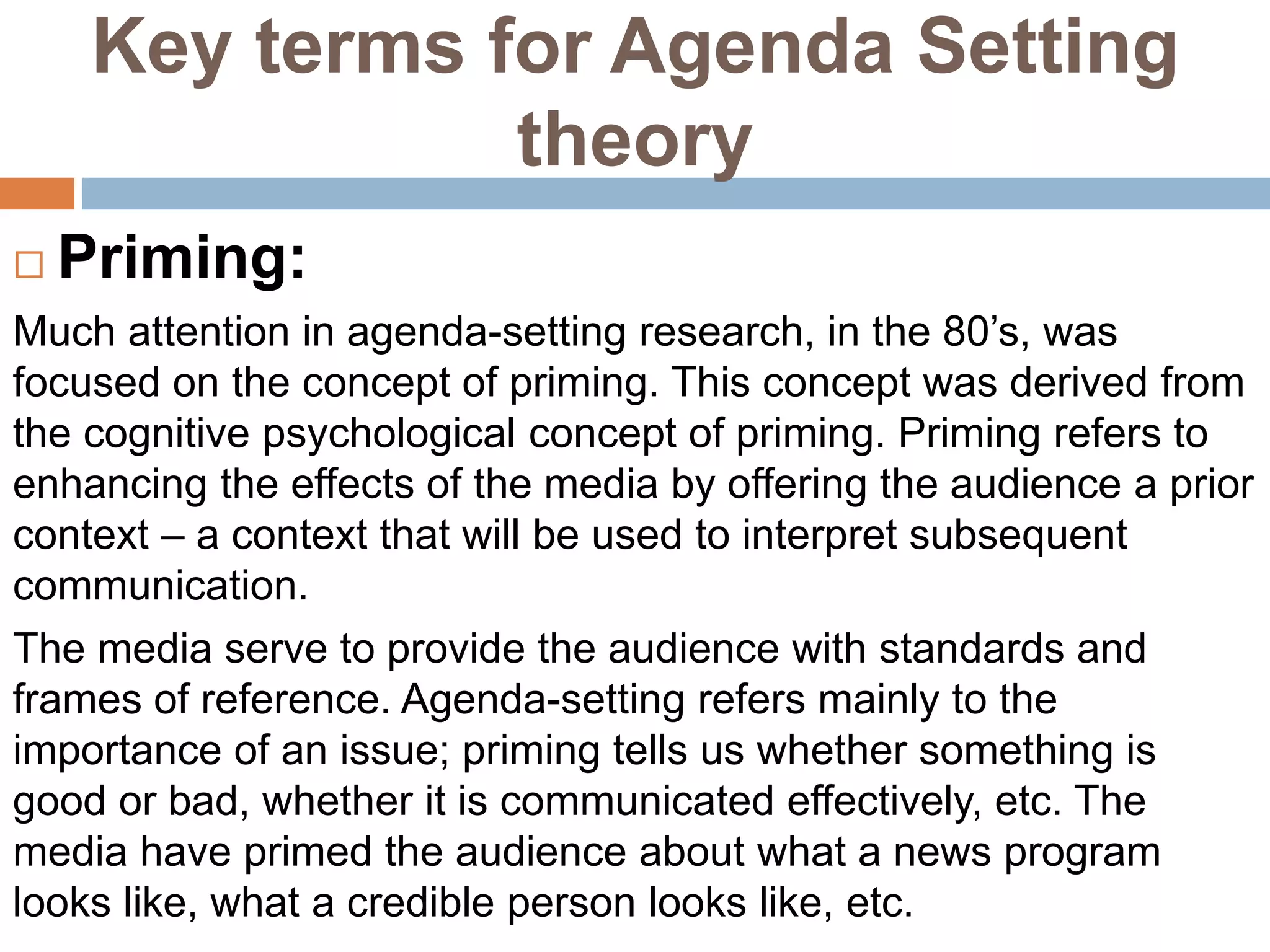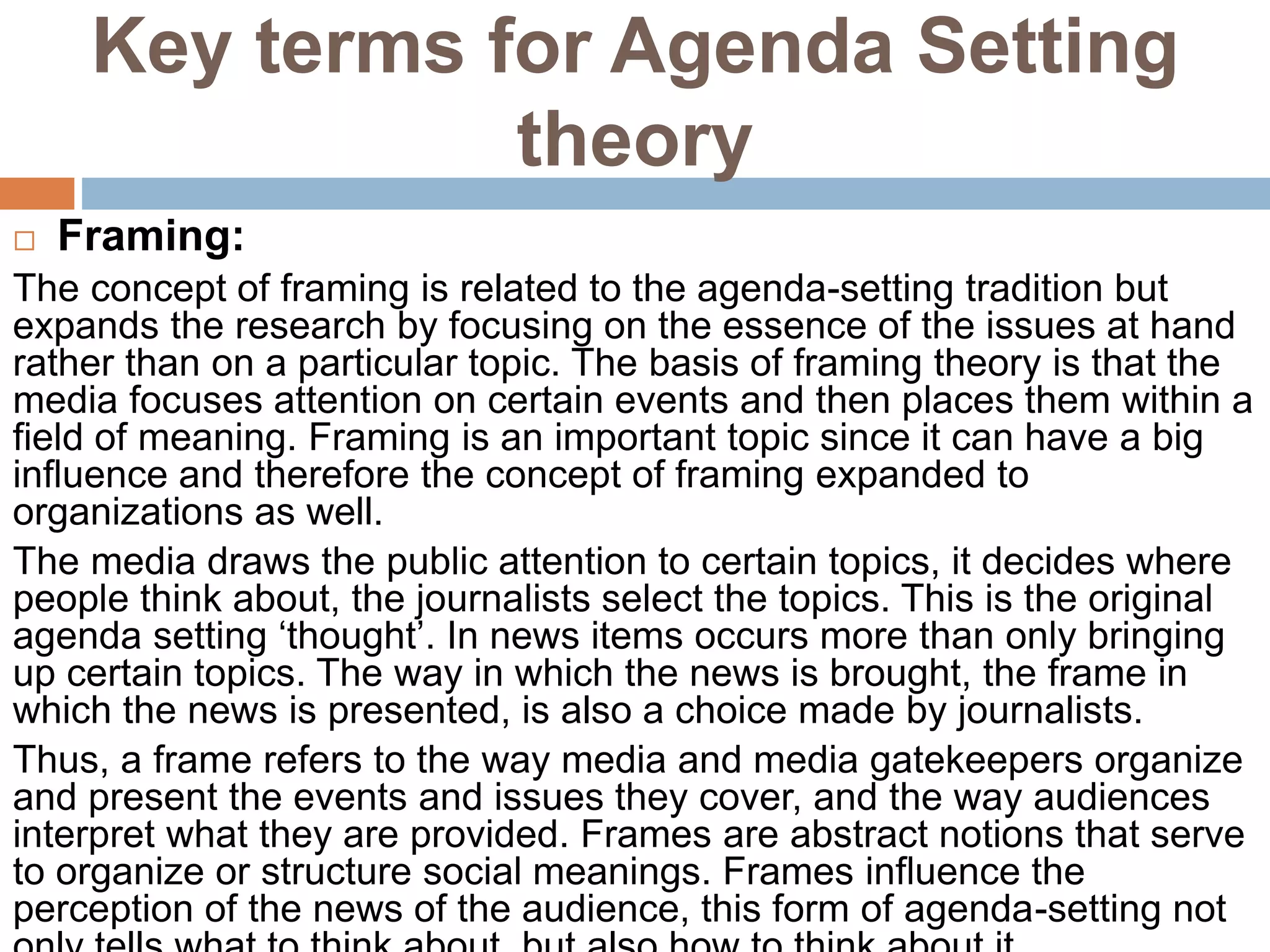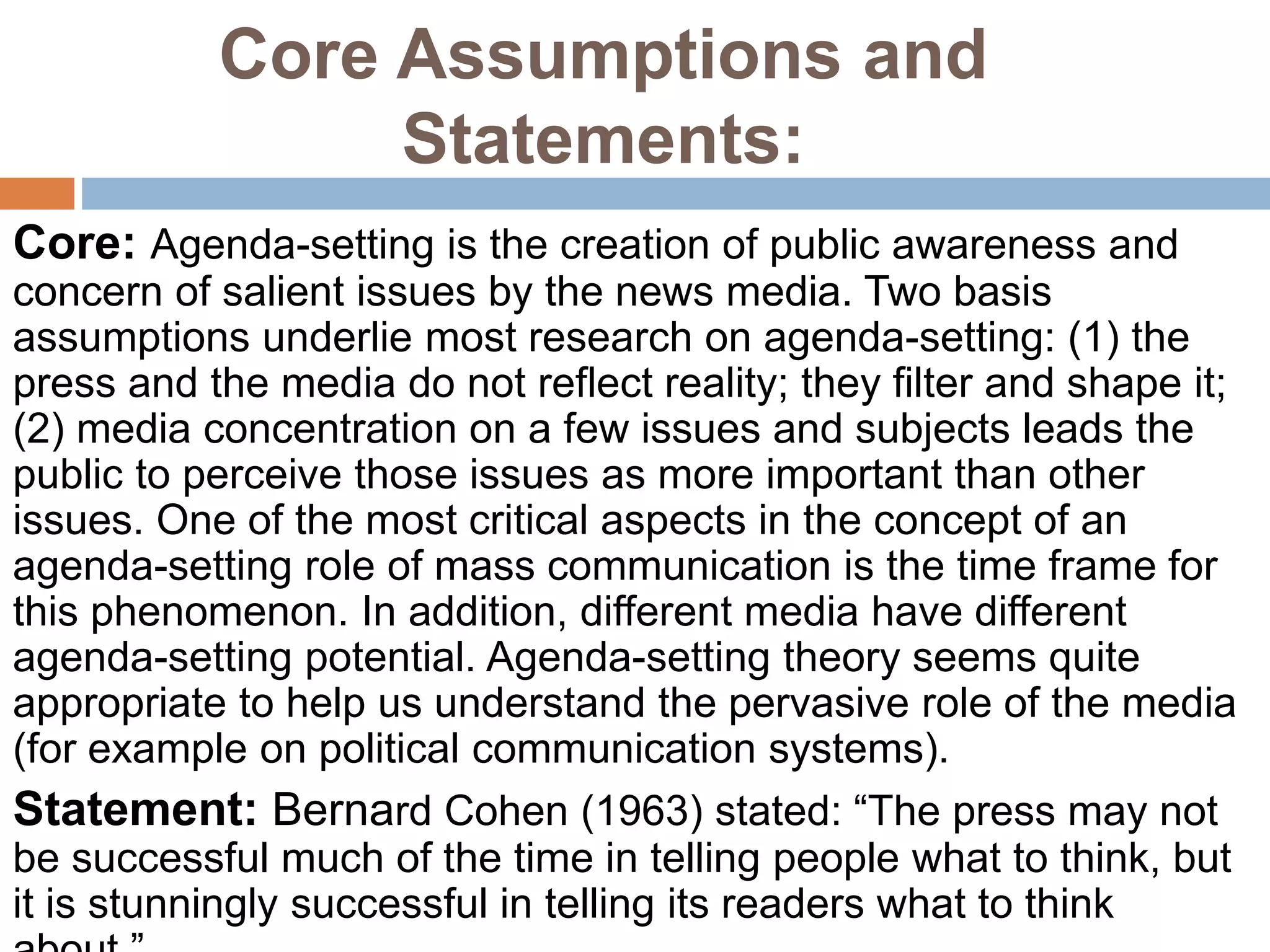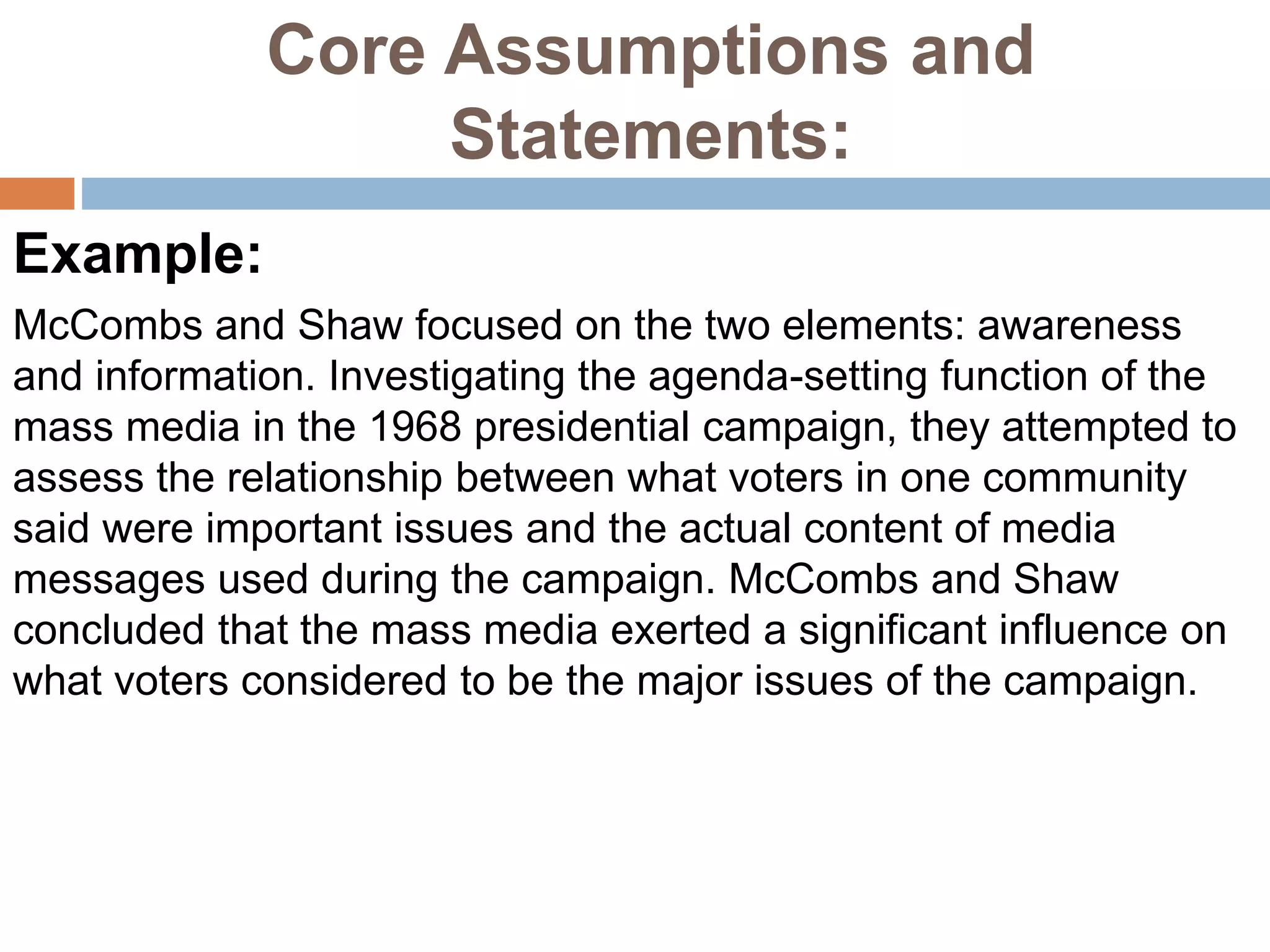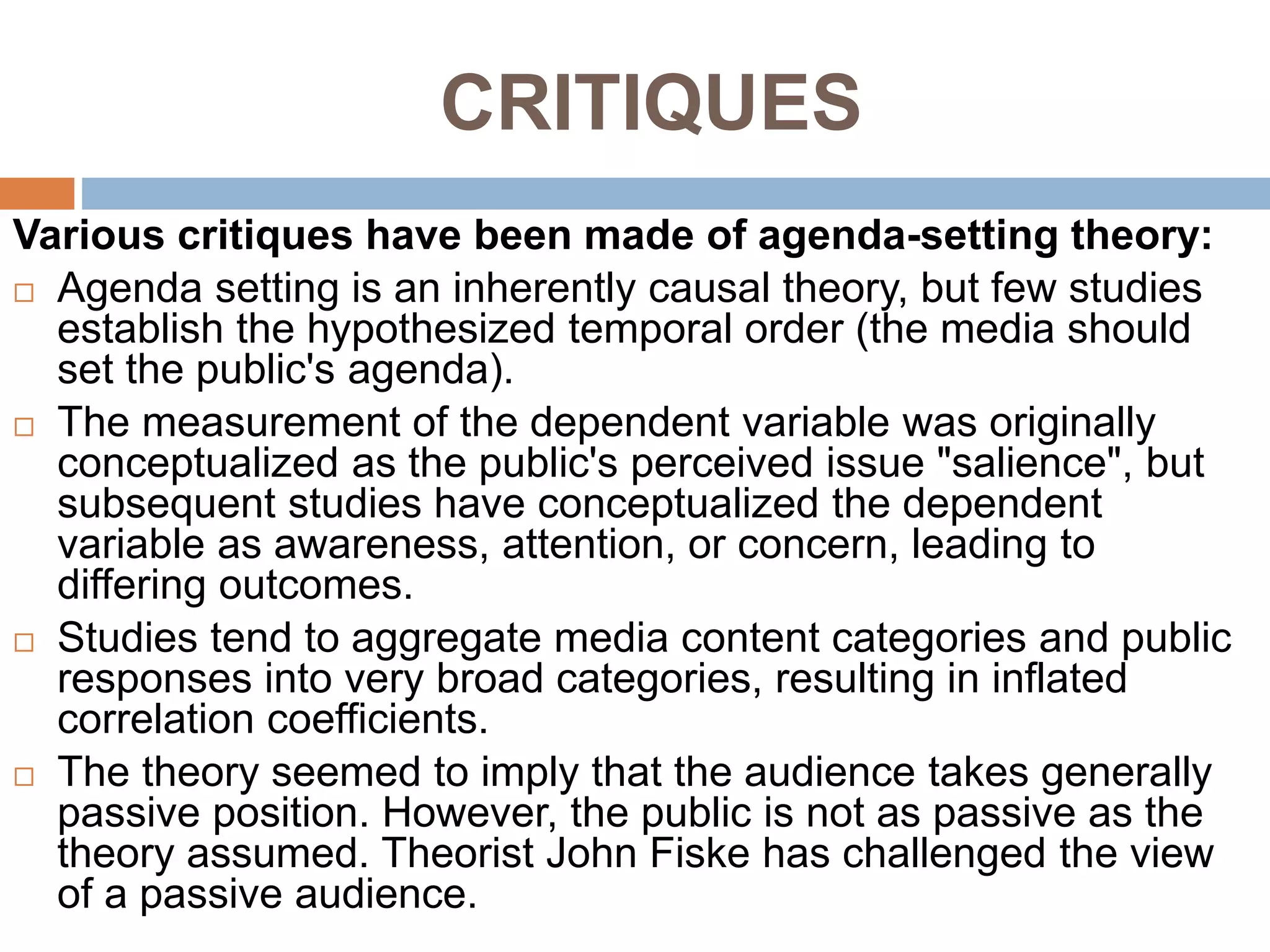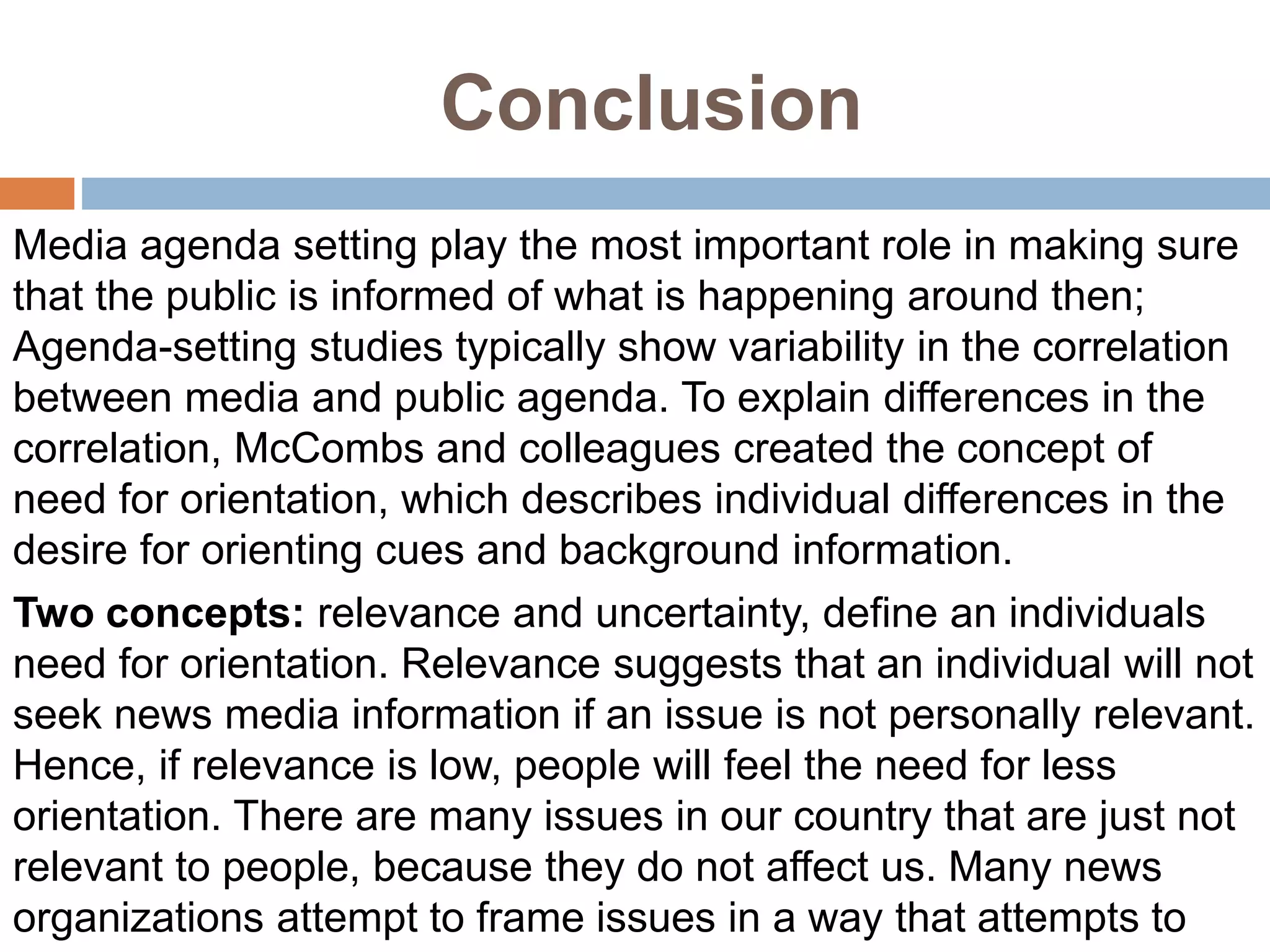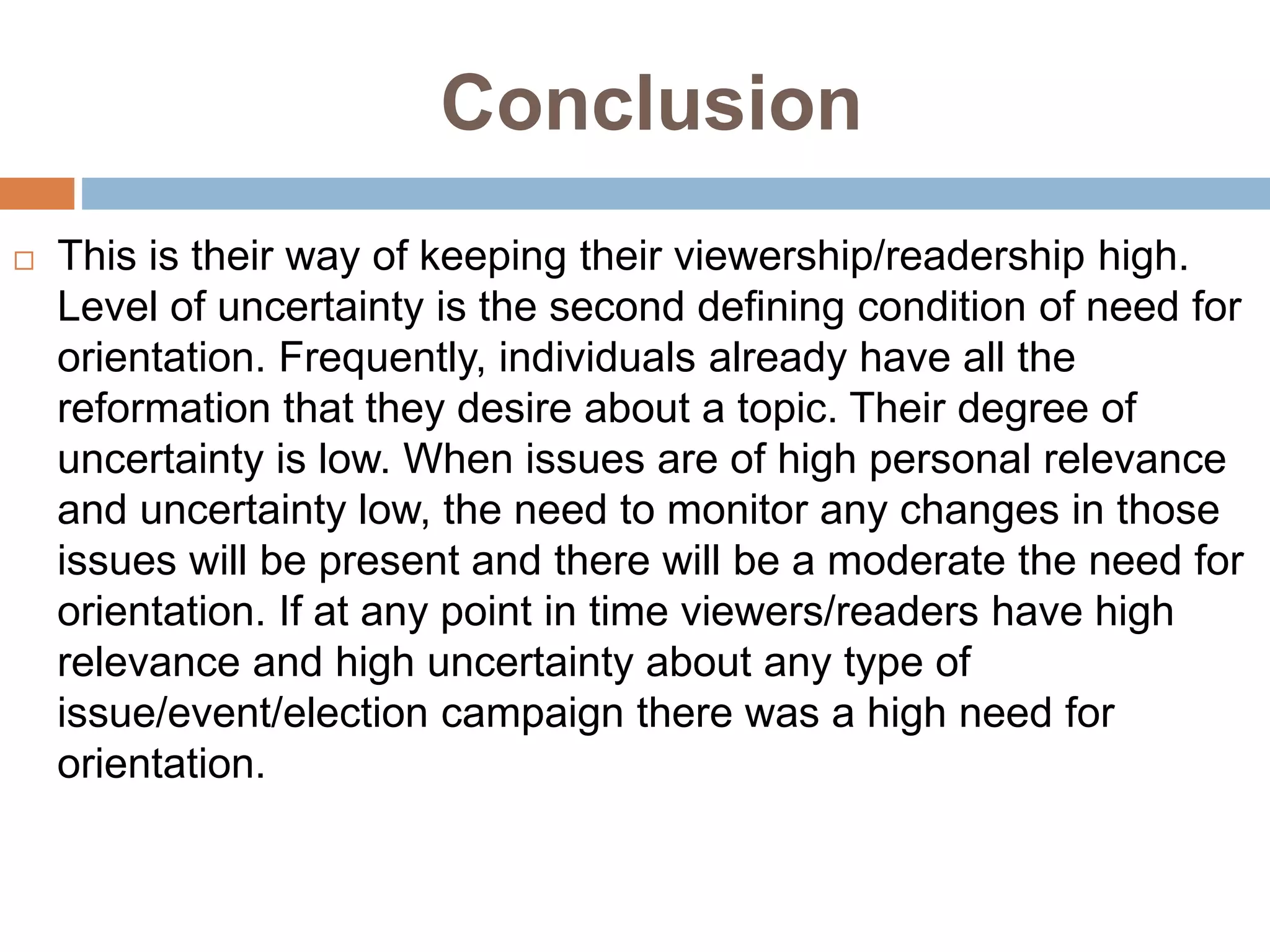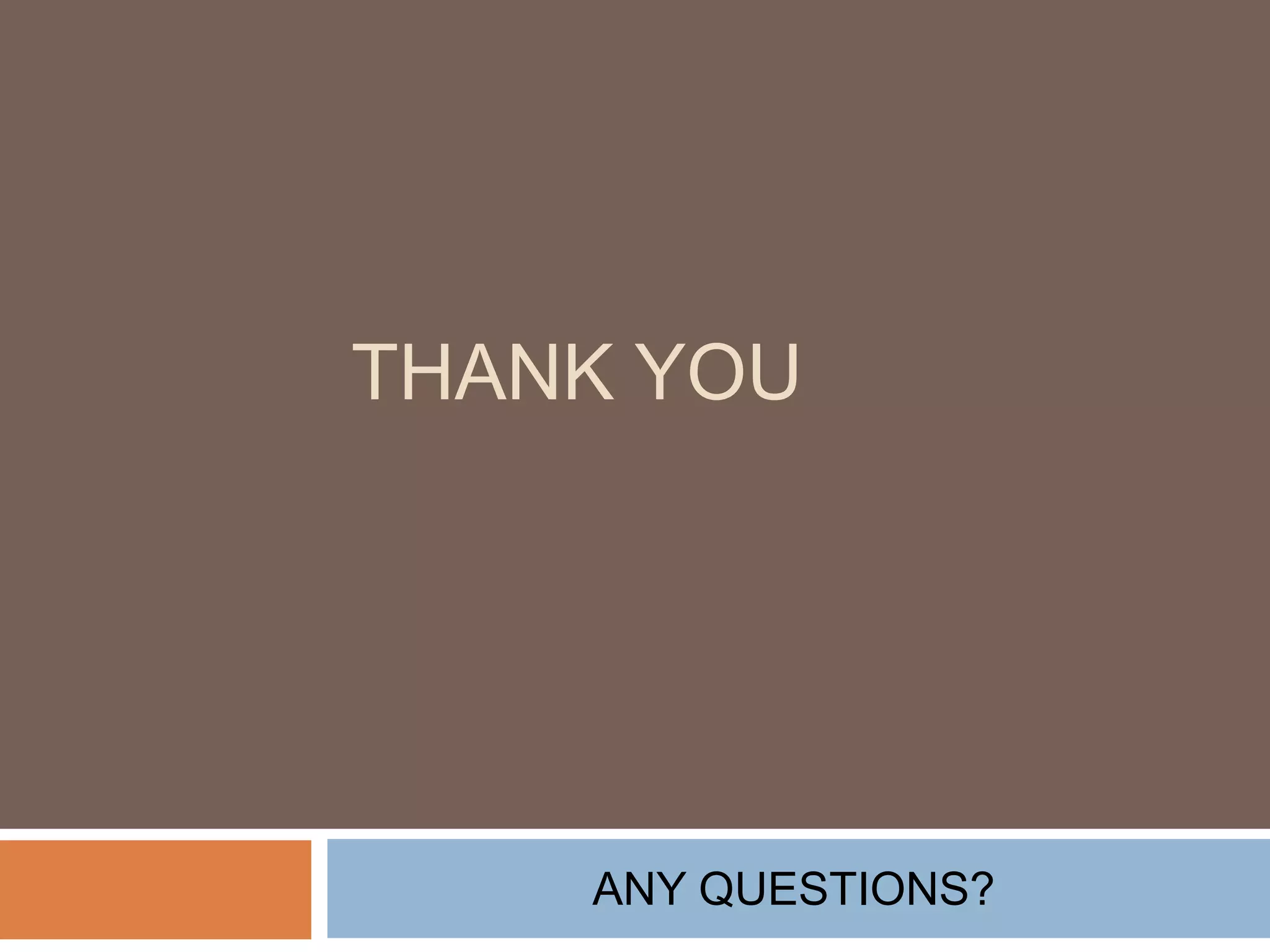Agenda-setting theory explains the media's power to influence public perceptions of what issues are important, originally developed by McCombs and Shaw during the 1968 U.S. presidential election. The theory highlights various applications, including political campaigns and commercial branding, asserting that media coverage shapes public awareness and concern for specific topics. Key concepts include public agenda, media agenda, and the distinction between framing and priming, while critiques address the complexity and passive audience assumptions associated with the theory.
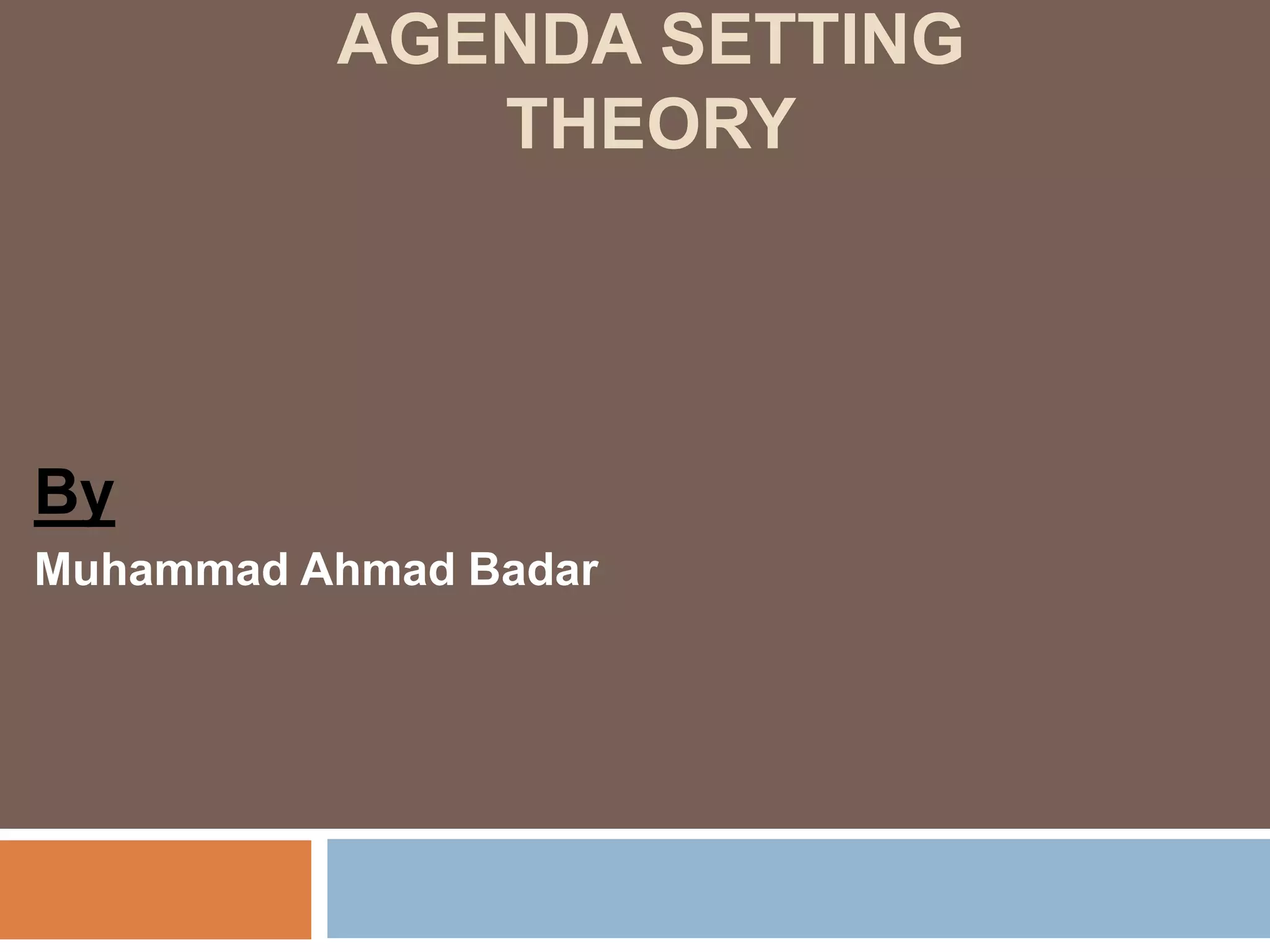
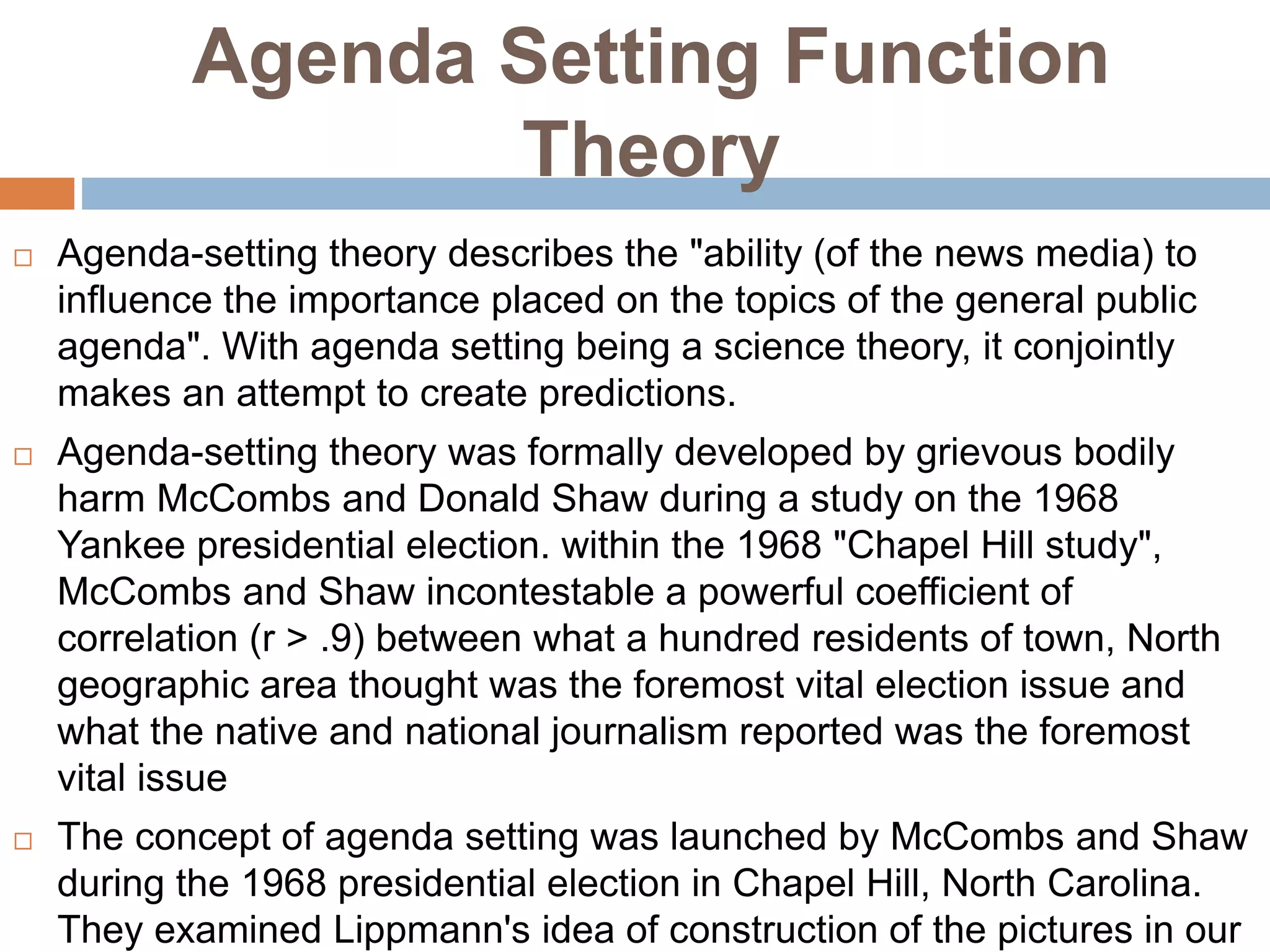
![Agenda Setting Function
Theory
A relatively unknown scholar named G. Ray Funkhouser
performed a study highly similar to McCombs and Shaw's
around the same time the authors were formalizing the
theory.[8] All three scholars – McCombs, Shaw, and
Funkhouser – even presented their findings at the same
academic conference. Funkhouser's article was published later
than McCombs and Shaw's, and Funkhouser doesn't receive as
much credit as McCombs and Shaw for discovering agenda
setting. According to Everett Rogers, there are two main
reasons for this.[6] First, Funkhouser didn't formally name the
theory. Second, Funkhouser didn't pursue his research much
past the initial article. Rogers also suggests that Funkhouser
was geographically isolated at Stanford, cut off from interested
researchers, whereas McCombs and Shaw had got other](https://image.slidesharecdn.com/agendasettingtheoryslides-200113095726/75/Agenda-setting-theory-slides-3-2048.jpg)
